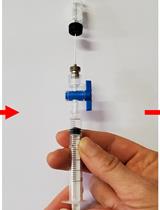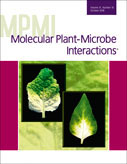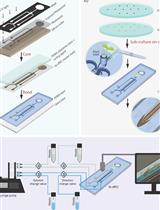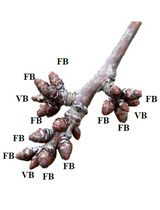- EN - English
- CN - 中文
I Plate-based Assay for Studying How Fungal Volatile Compounds (VCs) Affect Plant Growth and Development and the Identification of VCs via SPME-GC-MS
用于研究真菌挥发性化合物(VCs)如何影响植物生长发育并通过SPME-GC-MS技术鉴定VCs的I板检测法
(*contributed equally to this work) 发布: 2019年02月20日第9卷第4期 DOI: 10.21769/BioProtoc.3166 浏览次数: 8132
评审: Zhaohui LiuDemosthenis ChronisTimo A Lehti

相关实验方案

使用气相色谱和火焰离子化检测技术对亚热带乔木作物荔枝(Litchi chinensis Sonn.)叶和芽组织中乙烯产量进行定量分析
Regina B. Cronje and Arnoldus J. Jonker
2023年03月20日 1475 阅读
Abstract
Biogenic volatile compounds (VCs) mediate various types of crucial intra- and inter-species interactions in plants, animals, and microorganisms owing to their ability to travel through air, liquid, and porous soils. To study how VCs produced by Verticillium dahliae, a soilborne fungal pathogen, affect plant growth and development, we slightly modified a method previously used to study the effect of bacterial VCs on plant growth. The method involves culturing microbial cells and plants in I plate to allow only VC-mediated interaction. The modified protocol is simple to set up and produces reproducible results, facilitating studies on this poorly explored form of plant-fungal interactions. We also optimized conditions for extracting and identifying fungal VCs using solid phase microextraction (SPME) coupled to gas chromatography-mass spectrometry (GC-MS).
Keywords: Arabidopsis thaliana (拟南芥)Background
Volatile compounds (VCs) have been shown or suggested to play varied and crucial roles in mediating organismal interactions within and across kingdoms. Plants rely on VCs to attract pollinators, seed dispersers, and parasitoids (Baldwin, 2010; Herrmann, 2010). Animals have evolved sophisticated olfactory systems to detect and respond to foods, threats, and mates through volatile cues (Buck, 2004). Similarly, microbial VCs seem to perform diverse functions such as suppressing competitors, regulating their population density, and controlling morphological transitions (Bailly and Weisskopf, 2012; Bennett et al., 2012; Bitas et al., 2013). Roles of microbial VCs in plant growth, development, and stress response have been investigated using several experimental setups that physically separate microbial cells from plants so that only VC-mediated interaction can occur (Ryu et al., 2003; Kai and Piechulla, 2009; Xie et al., 2009; Hung et al., 2013; Vaishnav et al., 2015). Among them, a method employing bipartite Petri plate, also called I plate, has been most frequently used. We adopted I plate to study the effect of VCs produced by soilborne fungal pathogens on plant growth, development, and responses to biotic and abiotic stresses (Bitas et al., 2015; Li and Kang, 2018; Li et al., 2018b). In addition, we optimized a scheme for VC extraction and analysis to help identify fungal VCs that are responsible for modulating plant growth and development (Li et al., 2018b).
Here, we provide a detailed protocol for setting up an I plate assay used for evaluating the effect of VCs produced by Verticillium dahliae, a devastating soilborne fungal pathogen that infects hundreds of plant species, on Arabidopsis thaliana. This protocol enables rapid and straightforward determination of if and how fungal VCs affect plants. We also describe a protocol for capturing VCs through solid phase microextraction (SPME) and analyzing extracted VCs via gas chromatography-mass spectrometry (GC-MS). In combination, these protocols will help explore how VCs produced by diverse fungi affect plants and can also be applied to study VC-mediated interactions between microbes.
Materials and Reagents
- Surgical blades #10 and #11
- Parafilm (Bemis, catalog number: PM-99)
- Paper towel
- 10 µl and 1,000 µl micropipette tips
- 100 x 15 mm I plate (VWR, catalog number: 25384-310)
- 100 x 100 mm square plate (VWR, catalog number: 10799-140)
- 100 x 15 mm (VWR, catalog number: 25384-302) and 60 x 15 mm (VWR, catalog number: 25384-092) Petri plates
- 1.7 ml microcentrifuge tube (VWR, catalog number: 87003-294)
- 25 ml serological pipette (VWR, catalog number: 89130-900)
- Filter unit with 0.2 µM cellulose membrane (Nalgene, catalog number: 121-0020)
- 1.5 ml sample vial (Shimadzu, catalog number: 221-34274-91), white cap with septum
- V. dahliae strains PD322 and PD413 (conidial suspension in 20% glycerol and stored at -80 °C)
- A. thaliana ecotype Col-0 seeds (Lehle Seed Co.)
- Sterile MilliQ water
- Murashige and Skoog (MS) basal medium (Sigma-Aldrich, catalog number: M0404-10L)
- Sucrose (Alfa Aesar, catalog number: A15583)
- Granulated agar (Difco, catalog number: 214530)
- Potato dextrose agar (PDA) (Difco, catalog number: 213400)
- 200 proof ethanol (KOPTEC, catalog number: 64-17-5)
- 6% sodium hypochlorite (CLOROX)
- n-Hexane (EMSURE, catalog number: 1043744000)
- C7-C30 saturated alkanes (Sigma-Aldrich, catalog number: 49451-U)
- 99.99% pure helium gas
- 0.5x PDA medium (see Recipes)
- MS agar medium (see Recipes)
Equipment
- Pyrex glass bottle
- 10 µl and 1,000 µl micropipettes
- Scalpel
- Forceps
- Cork borer (5 mm in diameter)
- SPME fiber holder (Supelco, catalog number: 57330-U)
- 15 ml clear glass vial (Supelco, catalog number: 27159), screw cap with PTFE/silicone septum
- SPME fiber assembly with 50/30 µm DVB/CAR/PDMS fiber coating (Supelco, catalog number: 57328-U)
- Electric pipette controller (Drummond Scientific Co., catalog number: 4-000-110-TC)
- Vortex (VWR, model: Genie 2)
- Table-top centrifuge (Eppendorf, model: 5417C)
- Table-top shaker (VWR, catalog number: 57018-754)
- Analytical balance (Mettler Toledo, model: AE-100)
- Dissecting microscope (Zeiss, model: Stemi 2000-C)
- Incubator (Sheldon Manufacturing, model: 1510E)
- Plant growth chamber (Conviron, model: CMP5090)
- Flexible-arm electrode holder (Mettler Toledo, catalog number: 30266628)
- GC-MS system (Shimadzu, model: GCMS-QP2010 ultra) equipped with AOC-20i auto injector (Shimadzu, catalog number: 221-72315-48)
- Rtx-Wax capillary (60 m, 0.25 mm ID and 0.25 μm df) column (Restek, catalog number: 12426)
- 4 °C refrigerator
- Autoclave
Software
- ImageJ (version 1.52a)
- GC-MS Solution (Shimadzu, version 2.72), a package supporting GC-MS real-time and post-run analyses
- National Institute of Standards and Technology (NIST) Mass spectral library (Shimadzu, version 11)
Procedure
文章信息
版权信息
© 2019 The Authors; exclusive licensee Bio-protocol LLC.
如何引用
Wang, W., Li, N., Liu, X. and Kang, S. (2019). I Plate-based Assay for Studying How Fungal Volatile Compounds (VCs) Affect Plant Growth and Development and the Identification of VCs via SPME-GC-MS. Bio-protocol 9(4): e3166. DOI: 10.21769/BioProtoc.3166.
分类
微生物学 > 微生物新陈代谢 > 其它化合物
植物科学 > 植物生理学 > 植物生长
生物化学 > 其它化合物 > 小分子
您对这篇实验方法有问题吗?
在此处发布您的问题,我们将邀请本文作者来回答。同时,我们会将您的问题发布到Bio-protocol Exchange,以便寻求社区成员的帮助。
Share
Bluesky
X
Copy link












